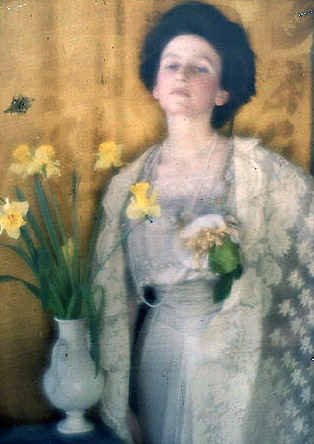Autochrome portrait of a young woman thought to be Charlotte Spaulding, taken around 1908 by Edward Steichen. Made with a complex process using three hues of dyed potato starch, autochromes were glass positives viewed with a projector or mounted on a light box. Credit: George Eastman House Collection.
TWO EXAMPLES of early color photography by none other than Edward Steichen have come to light recently, the
New York Times reports: "Almost as intriguing as the pictures themselves is the story of how they recently made their way from a house in Buffalo, where they apparently sat unseen for decades, to the collection of the George Eastman House in Rochester, one of the world’s leading photography museums, where they will be exhibited for the first time this fall." |
Click image for Comments. |
Home |
Browse All Photos

